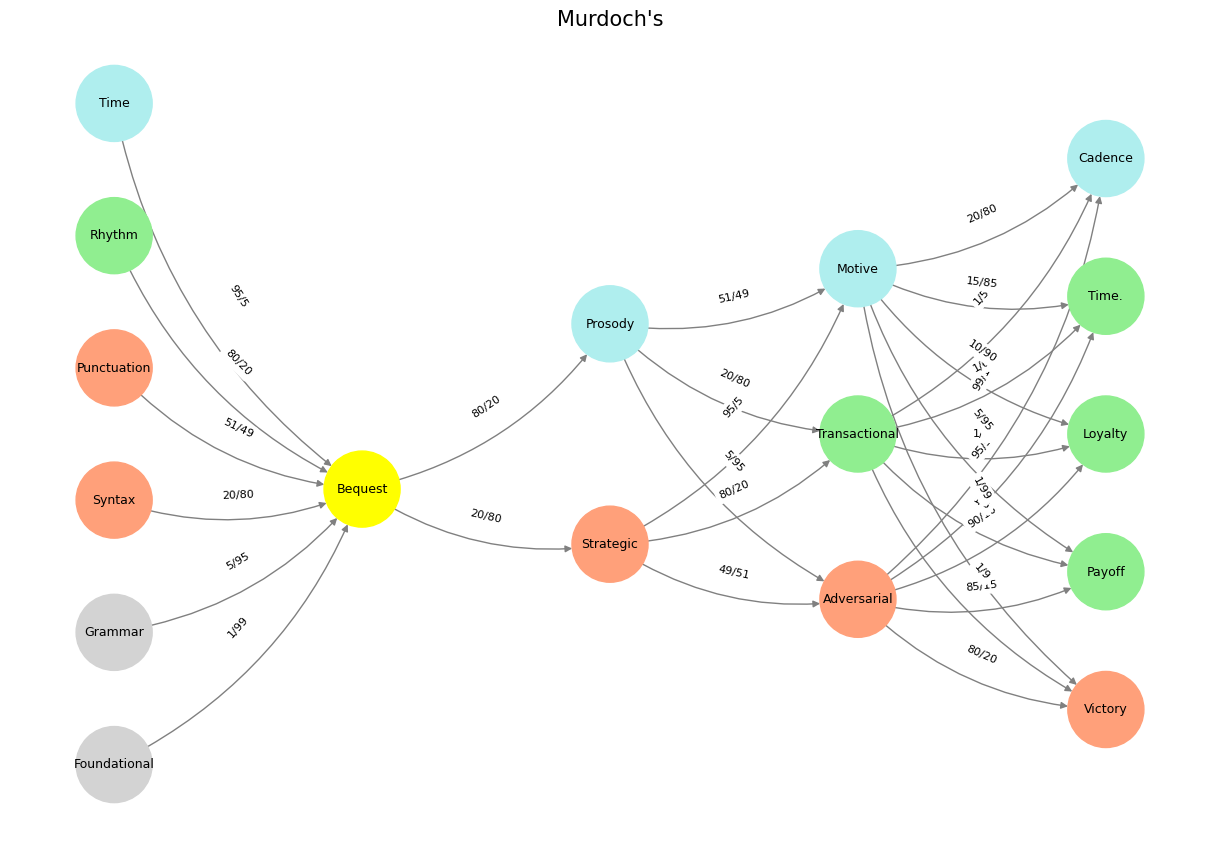Traditional#
Nationalism and the Thalamocortical Gate: The Deluge of Myth and Empire#
Nationalism is the most powerful thalamocortical gating mechanism ever devised. 🛡️🔱⚔️ It is not just an ideology—it is a neurological event, an epistemic filter that determines which signals pass through and which are suppressed. It is Athena’s shield raised in defense, a rigid boundary against entropy, ensuring that only the most coherent, self-affirming narrative reaches the collective mind. And yet, like all gates, it is vulnerable. For the tighter the filter, the greater the pressure of the deluge that follows. 🌊⏳🔥
At its highest gating, nationalism becomes Platonic, a vision of the nation as an ideal form. 🏛️👑 It is the MAGA mythos, the Nazi dream of Aryan perfection, the French monarchy before 1789, each one constructing a purified signal, untainted by foreign interference. Apollo’s lyre 🎼🎻 and his bow 🏹🔥 represent this harmonic order, the orchestration of history into a singular, coherent cadence. At this extreme, history is not iterative—it is destiny. This is why totalitarian nationalism despises noise; it cannot allow for randomness, for unpredictability, for statistical drift. The pure race, the pure culture, the pure idea—these are hyper-gated constructs, reflections of a cortical world where only a singular vision is permitted through the thalamic sieve.
At the lowest gating, nationalism collapses into the Bacchanalian frenzy of myth and raw instinct. 🍷🐍🦁🔥 It is the collapse of the Weimar Republic, the street-fighting SA, the Red Hats storming the Capitol, the Jacobins at their most bloodthirsty. It is the French Revolution when Athena’s shield was discarded and Apollo’s lyre was broken—a return to Dionysian excess. This is nationalism at the moment of explosion, when the suppressed signals flood the network all at once. It is not the order of empire, but the rage of the mob, convinced that the sacred has been profaned, that the gatekeepers have failed. 🩸🔨💣
And yet, even as these two extremes battle, nationalism itself remains a function of salience. Aristotle’s role 🦉📜⚖️ is to adjust the node. Nationalism, like history, is a dynamic equilibrium between order and chaos. When the node is tuned too high, the nation-state becomes a Platonic hallucination, blind to empirical reality. Nazi Germany ignored logistics, ignored supply chains, ignored the material realities of war because its model of empire was ideological, not iterative. 📜⚡🔱 MAGA ignores economic transitions, ignores demographic shifts, ignores climate change, because it operates on an ossified vision of America frozen in time. 🏛️🦅🛢️
But turn the node down too low, and you get the inverse: the dissolution of the state, the loss of any coherent national identity. 🌀💀 This is what happened when Baconian empiricism overtook the British Empire, when data—profit margins, tax revenues, colonial resistance—began flooding in, showing that the empire was no longer sustainable. 🌍📉 Once the gate lowered, the narrative collapsed. The same is true for every empire that mistook Platonic stability for Aristotelian iteration—for the Ottoman Empire when it failed to adapt, for the Soviet Union when Gorbachev let too much noise in. 🏴☠️⚔️💰
And what of Raphael’s School of Athens? The greatest unspoken truth of that painting is not in the philosophers themselves, but in the pillars that frame them. 🏛️🏛️ Nearly every critic fixates on the figures, debating whether Aristotle points to the ground for empiricism or Plato gestures upward for idealism. But the true compression of that fresco is in its architectural encoding—two pillars, one on the left, one on the right, framing the space where all the debates unfold. These pillars are Athena and Apollo, structure and harmony, gatekeeping and illumination. The School of Athens is not just a celebration of philosophy—it is a demonstration of thalamocortical gating itself. The space between those pillars is the range of cognition, the bandwidth within which discourse happens.
Nationalism exists within this same bandwidth. 🎖️🏆⚖️ At its best, it moderates between Plato and Bacon, between myth and data, between ideology and iteration. At its worst, it becomes either an unyielding hallucination or a chaotic flood. 🌀⚡ The nationalist dreams of the 19th and 20th centuries—the German Reich, the British Raj, the American Century—each tried to construct an unbreakable signal. And yet, each one succumbed to the same fate: the deluge followed.
MAGA, like Nazi Germany, like Napoleonic France, is not an anomaly but a cycle. It is the final attempt to keep the gate shut before the flood comes. 💥🕰️🌊 Après moi, le déluge is not a warning—it is an inevitability. 🏛️🔥⏳
Show code cell source
import numpy as np
import matplotlib.pyplot as plt
import networkx as nx
# Define the neural network layers
def define_layers():
return {
'Suis': ['Foundational', 'Grammar', 'Syntax', 'Punctuation', "Rhythm", 'Time'], # Static
'Voir': ['Bequest'],
'Choisis': ['Strategic', 'Prosody'],
'Deviens': ['Adversarial', 'Transactional', 'Motive'],
"M'èléve": ['Victory', 'Payoff', 'Loyalty', 'Time.', 'Cadence']
}
# Assign colors to nodes
def assign_colors():
color_map = {
'yellow': ['Bequest'],
'paleturquoise': ['Time', 'Prosody', 'Motive', 'Cadence'],
'lightgreen': ["Rhythm", 'Transactional', 'Payoff', 'Time.', 'Loyalty'],
'lightsalmon': ['Syntax', 'Punctuation', 'Strategic', 'Adversarial', 'Victory'],
}
return {node: color for color, nodes in color_map.items() for node in nodes}
# Define edge weights (hardcoded for editing)
def define_edges():
return {
('Foundational', 'Bequest'): '1/99',
('Grammar', 'Bequest'): '5/95',
('Syntax', 'Bequest'): '20/80',
('Punctuation', 'Bequest'): '51/49',
("Rhythm", 'Bequest'): '80/20',
('Time', 'Bequest'): '95/5',
('Bequest', 'Strategic'): '20/80',
('Bequest', 'Prosody'): '80/20',
('Strategic', 'Adversarial'): '49/51',
('Strategic', 'Transactional'): '80/20',
('Strategic', 'Motive'): '95/5',
('Prosody', 'Adversarial'): '5/95',
('Prosody', 'Transactional'): '20/80',
('Prosody', 'Motive'): '51/49',
('Adversarial', 'Victory'): '80/20',
('Adversarial', 'Payoff'): '85/15',
('Adversarial', 'Loyalty'): '90/10',
('Adversarial', 'Time.'): '95/5',
('Adversarial', 'Cadence'): '99/1',
('Transactional', 'Victory'): '1/9',
('Transactional', 'Payoff'): '1/8',
('Transactional', 'Loyalty'): '1/7',
('Transactional', 'Time.'): '1/6',
('Transactional', 'Cadence'): '1/5',
('Motive', 'Victory'): '1/99',
('Motive', 'Payoff'): '5/95',
('Motive', 'Loyalty'): '10/90',
('Motive', 'Time.'): '15/85',
('Motive', 'Cadence'): '20/80'
}
# Calculate positions for nodes
def calculate_positions(layer, x_offset):
y_positions = np.linspace(-len(layer) / 2, len(layer) / 2, len(layer))
return [(x_offset, y) for y in y_positions]
# Create and visualize the neural network graph
def visualize_nn():
layers = define_layers()
colors = assign_colors()
edges = define_edges()
G = nx.DiGraph()
pos = {}
node_colors = []
# Add nodes and assign positions
for i, (layer_name, nodes) in enumerate(layers.items()):
positions = calculate_positions(nodes, x_offset=i * 2)
for node, position in zip(nodes, positions):
G.add_node(node, layer=layer_name)
pos[node] = position
node_colors.append(colors.get(node, 'lightgray'))
# Add edges with weights
for (source, target), weight in edges.items():
if source in G.nodes and target in G.nodes:
G.add_edge(source, target, weight=weight)
# Draw the graph
plt.figure(figsize=(12, 8))
edges_labels = {(u, v): d["weight"] for u, v, d in G.edges(data=True)}
nx.draw(
G, pos, with_labels=True, node_color=node_colors, edge_color='gray',
node_size=3000, font_size=9, connectionstyle="arc3,rad=0.2"
)
nx.draw_networkx_edge_labels(G, pos, edge_labels=edges_labels, font_size=8)
plt.title("Murdoch's", fontsize=15)
plt.show()
# Run the visualization
visualize_nn()


Fig. 37 While neural biology inspired neural networks in machine learning, the realization that scaling laws apply so beautifully to machine learning has led to a divergence in the process of generation of intelligence. Biology is constrained by the Red Queen, whereas mankind is quite open to destroying the Ecosystem-Cost function for the sake of generating the most powerful AI.#

